CONVERSATIONS WITH SAI – Part Sixteen
CONVERSATIONS WITH SAI – Part Sixteen
H: (HISLOP):The Buddha’s way of slowing down the mind is given much attention in Burma. Swami must have a better way?
SAI:┬ĀThe Buddha’s way of watching the breath as it enters and leaves the nostrils is just a beginning, just for a few minutes before the meditation begins. There is no ‘better’ way to quiet the mind. There is only one way. Sitting in meditation, the question often comes up, ‘How long to sit?’ There is no answer. There is no particular time.┬ĀMeditation is really an┬Āall-day-long process.┬ĀThe sun shines and the sunlight falls here and there. What is the difference between the sun and the sunlight?
H:┬ĀThere is no difference, Swami.
SAI:┬ĀIn the same way, all is God – thoughts, desires, all are God. All thoughts should be regarded as God.
H:┬ĀBut Swami, there is still the puzzle of how to slow down the activity of the mind
SAI:┬ĀReally, there is no mind; it is a question of what is desired. With God as the only desire, all will be well.
H:┬ĀBut in meditation there is this fast rush of thoughts and ideas through the mind. Does not this need to be slowed down so that there may be quiet in meditation?
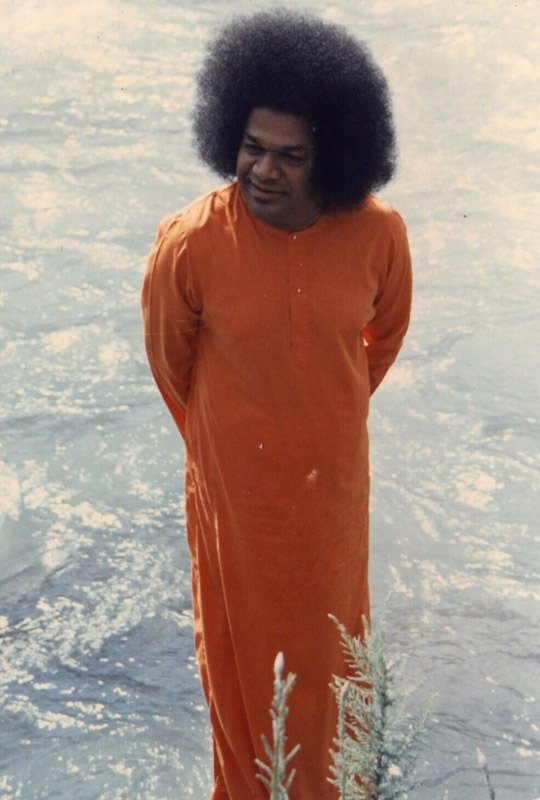
SAI:┬ĀYes. The mind must slow down. At a certain stage it will come to a stop.┬ĀIf desire in meditation is turned towards union with God, the mind will naturally slow down. No method should be used; no force used.┬ĀDesire should not be too fast, too strong. Even desire for God can be too hurried, too feverish. Start early, drive slowly, reach safely. It is possible to be too lazy. Fast, then slow is also bad. The process should be steady.
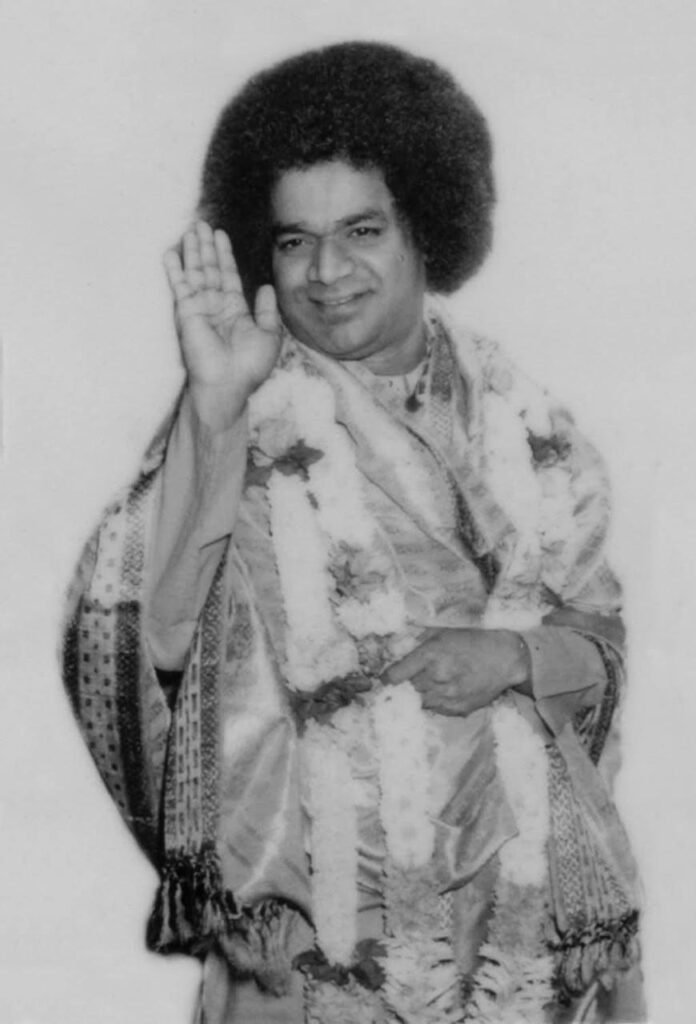
H:These thoughts that stream through the mind, are they material?
SAI:Yes, they are matter. All matter is impermanent.
H:┬ĀWhere do thoughts come from?
SAI:They come from food and environment. If you have┬Āsathwic┬Āfood and have only desire for good, only good thoughts will come.
H:┬ĀWhere do thoughts go?
SAI:┬ĀThey go no place. Because thoughts do not flow through the mind. The mind goes out and grasps and gets engaged in thoughts. If desire is for God, the mind does not go out. But the best way is not to have the problem of getting rid of thoughts.┬ĀThe best way is to see all thoughts as God. Then only God-thoughts will come
H:┬ĀSwami says that it is the┬ĀAtma┬Āthat is unlimited power, yet in one’s daily life, the mind gives the experience of being a sort of relentless power.
SAI:┬ĀThe mind is passive, yet it seems to be active. It is active only because the┬ĀAtma┬Ā(Self) reflects into it. It sometimes seems to be stronger than┬ĀAtma. Iron, in its nature, is not hot; it is cool and passive.
The iron is heated in fire. Is it the iron that burns, thus creating the heat? No,┬Ā
A Visitor:┬ĀHow can I tell what is right thought?
SAI:┬ĀHere, in the Ashram, you can ask Swami. In America,┬Āpray for the answer, then make inquiry in an impersonal way, and in half┬Āan┬Āhour you will have the answer.If you know what is right, don’t ask. Do it. That is confidence, God power. Put aside all relationships. Is the work right, regardless of who is involved?
H:Swami says to keep a distance from the mind. What does that mean?
SAI: That means do not be led by the mind.
H:What are the acceptable mental functions?
SAI:┬ĀFirst, find out what is right and what is wrong. If right, do that which satisfies you. If unsure, do nothing until sure.
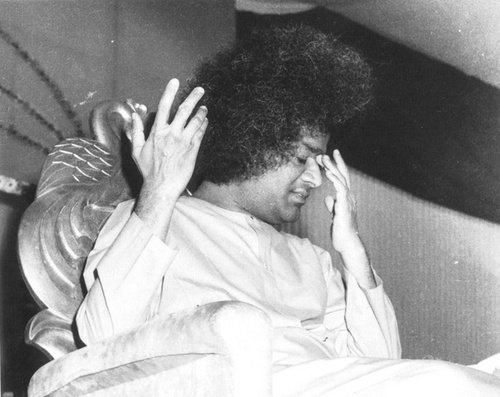
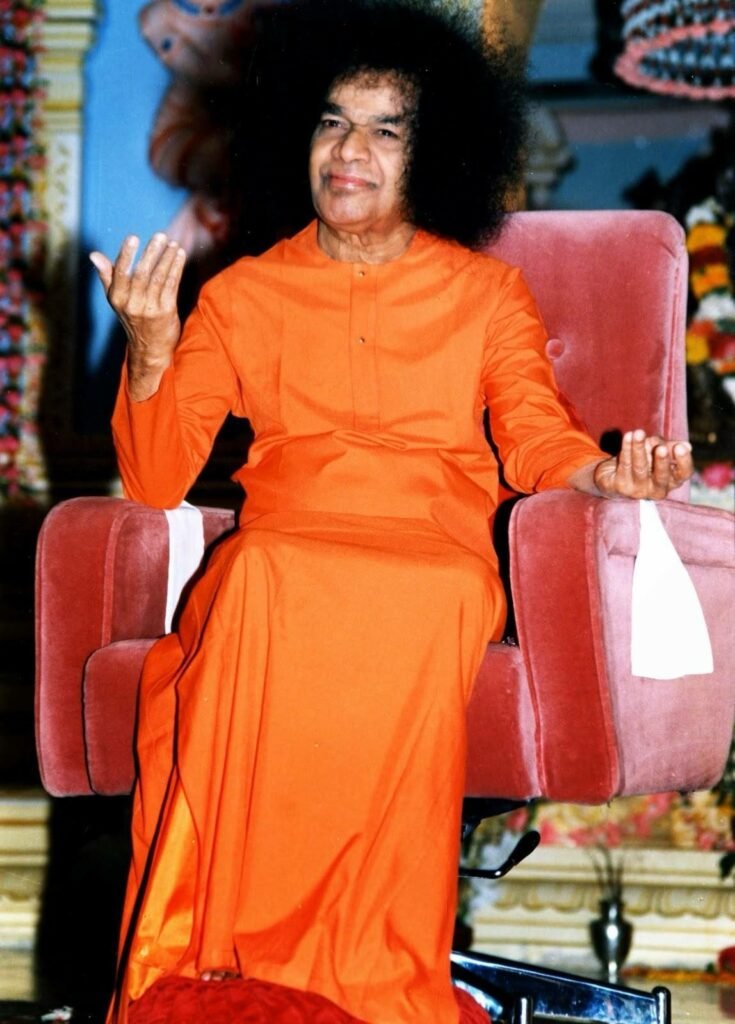
SAI:┬ĀOnly in words, in the mind, is there a difference.┬ĀWhen one is fully devoted to God, desiring Him only, the verbal and conceptual differentiation will cease, and the world also will be seen as God.┬ĀThe sequence should be experienced and seen as God, life, world. But most people see the world, life – and God is far distant.
ON THE REASON FOR CREATION
A Visitor:┬ĀWhy is creation? What is the reason for it?
SAI:┬ĀFirst ask, ‘Why food?’ No reason. ‘Why marriage?’ No reason. Then children. ‘Why children?’ No reason. It is your wish.┬ĀCreation is God’s wish, His┬ĀSankalpa. There is a seed of a tree. It sprouts and there are many twigs and branches – and more and more. Thousands of leaves grow, and hundreds of fruits. Diversity – all from a single seed.
Visitor:┬ĀBut what is behind creation? What is the reason?
SAI:┬ĀFirst ask, ‘Who are you?
CONVERSATIONS WITH SAI – Part Seventeen
H (HISLOP): Would Swami please explain His statement that the world is a mirror?
SAI:┬ĀThe world is a mirror, and life is the reflection of God. If the mirror is pure, only God is seen. The opposites, good and bad, are no longer seen at all. There is only God. If the world is not seen, then there is neither mirror nor any reflection. We have the idea of the world only because of the mirror effect. The mirror (world) exists only as long as our desires exist. ‘World’ means the inside sense world. We apprehend the world through the senses. These senses are seen outside. It is only because of the illusion of the senses that there appears to be a body. A corpse is burned when the wood is set afire. The inner senses correspond to the wood. When they are burned through inquiry and┬Āsadhana┬Ā(spiritual practice), the body automatically disappears. Both inquiry and practice are necessary.
H:┬ĀBut, Swami, our experience is that objects exist independent of our consciousness of them.
SAI:┬ĀFor us the world exists only if we are there to see it.┬ĀIf we are blind, we do not see it. If we are in a faint, it does not exist for us. For us, the world is as we see it. It takes shape for us according to our viewpoint. If your viewpoint is that all is God, then everything we see is God. Suppose we take a picture with a camera. Do the trees enter the lens and impress themselves on the film, or does the camera reach out and grasp the trees?

HOW THE HEART IS LIKE A CAMERA
SAI:┬ĀWrong! I take a picture of a person who does not want his picture taken. Will the refusal prevent the picture? Or, put it in another way. The person wants his picture taken. Will that result in the picture? The heart is like a film that can capture the image of Swami. If the film is latent and clean, it can capture Swami even if He does not want it. But if the camera is without such a film, if the heart is impure and clouded, then Swami’s image cannot be there even if He wants it. The body is the camera, the mind is the lens, the intelligence is the switch, and love is the film.

SAI:┬ĀThe image need not be that of Swami.┬ĀIt may be love, which is Swami.┬ĀFirst, God is realized in form. He is seen everywhere in that form. Then God may be realized without form, since all forms are impermanent. A learning child, sees an elephant statue. On the statue, ‘elephant’ is written in words. The child cannot read the words, but learns about ‘elephant’ from its name as he hears it. Once he has learned to read, then just the word remains and from that he understands ‘elephant’. The statue, the form, is impermanent, but the words remain as long as the language endures. The word ‘elephant’ represents elephant in its formless state. Likewise, once the devotee learns the language of divinity, then God need not be pictured; the word is enough. But one learns about God through form and the name.
H:┬ĀWe see here the form of God as Swami. How are we to understand the form? Does God appear only as that one form? If the question is improper, may Swami please disregard it.
THE SECRET OF FORM AND THE FORMLESS
H:┬ĀSwami, please go a little deeper into ‘form’ and ‘formless’.
SAI:┬ĀThe body is not the truth we attribute to it. An example: a man worships the mother who gave him birth for 30 years. He massages her feet, prostrates before her, gazes into her eyes with love, listens to her voice, is warmed and made┬Āhappy by her affectionate and loving regard. At age 60, the mother dies. At once the son cries out, ‘Mother, Mother, why have you left me?ŌĆÖ Why did the man cry out? The body he worshipped was there, the feet he massaged daily were there, but he cried out that his mother was not there, that she had left him. We have to conclude that even though the man had for the past 30 years regarded the body and mother as one and the same, yet when the mother died he instantly knew that ‘mother’ was not body and that ‘mother’ had departed even though body remained.
So, of what value was the body, which was never the mother, even though for a time it had been regarded as mother? Contemplating this mystery, it is apparent that had it not been for the body, the mother could not have been known. It was only through the medium of body that the man had been able to experience and thus know the tender, loving, sublime quality of the mother which resulted in love rising up in his heart.┬ĀThe formless, timeless quality of ‘mother’ could be known and attained only through the impermanent form.

H:┬ĀSwami! This is wonderful! This explains the real significance of form.
SAI:┬ĀThe same is true of the formless transcendent divine. Without form, it is non-existent for us.┬ĀWe become cognizant of the divine through the medium of form.
H:┬ĀSai has revealed the secret of form and formless! How is the transition made from worship of God in form to worship of the formless divine?
SAI:The transition is made by full adoration of God in form, then seeing that beloved form in everyone and in every place. Then loving others comes naturally and easily.
H:┬ĀWhen Swami is present, His form is easily seen and may be worshipped, but when Swami’s physical person is absent, should one form a mental image of Him so that one may continue to see His form?
POUR THE MIND INTO THE MENTAL IMAGE
SAI:┬ĀYes. One should have a mental image of a form of God, fully developed, with oneŌĆÖs mind poured into that form. When the image of God is seen outside, it is qualified dualism. When seen in the mind it is qualified monism. When the form is absorbed into the Atma, that is┬ĀAdvaita, non-dualism.

The two preliminary steps are not separate stages; they are contained in┬ĀAdvaita, as buttermilk and butter are contained in milk. The image of God seen outside should be taken into the mind and then into the soul.
H:What is the best way to form the mental image of God?
SAI:┬ĀIf you wish, the form you see can be taken as an image. Or a photo can be taken.
H:┬ĀIf a photo of Swami, or the directly perceived image of Swami is taken as the mental image, no doubt the concentration should not waver from the chosen image?
SAI:┬ĀThe mind should be steady on the one chosen image of God. When an image is made of silver, the eyes, hair, mouth, and skin are all silver.
H:┬ĀPlease say that again.
SAI: The mind is poured into the mould of the image so that the mind is the image of God .
People think that Baba rests in the afternoon until 4 p.m.┬ĀBut He never rests. He is never tired. He is always working. People are upset when three or four relatives visit. But Baba’s visitors are endless. Baba is attending to every detail of His scholars and colleges, and to the millions of His devotees. And, for most people, the responsibility for their work rests elsewhere. But Baba is responsible for the results as well as for the work.
H:┬ĀConsidering the endless problems that Swami deals with in this world, it is strange that He is always in bliss, always happy.
SAI: Regardless of the event, Swami is always happy, always blissful.
H:┬ĀPlease excuse a question that may seem rude: Swami seems to have different moods. What does this mean?
SAI:┬ĀA boat glides over the flood but does not allow the flood to enter it. Just as one is at peace in a boat into which no water comes, no worries or concerns enter into Baba’s state of bliss. But ordinary men do not do the same as Baba. They allow ‘waterŌĆÖ – all sorts of worries and concerns – to enter the boat, and there is no happiness, no bliss, no peace of mind. Baba’s bliss is ever present, regardless of the world.
Consider that each month Baba must meet an expense budget of hundreds of thousands of rupees. On His shoulders rest all the affairs of the schools, the ashram, the people within His physical circle, the interviews, the petitions, the correspondence, the problems. That is on the body level.
At the same time on the mental level, Baba is with those who yearn for God, no matter in what area of the world – saints, yogis, rishis, spiritual aspirants everywhere, watching them, guiding them, fostering every movement of heart or mind towards God.
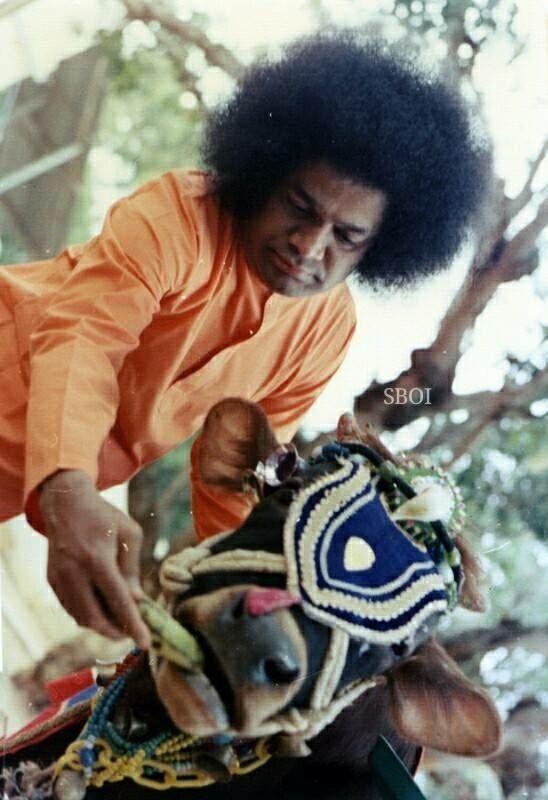
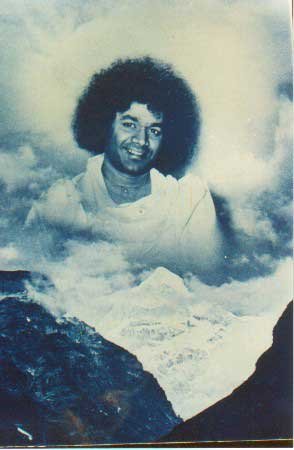
But Baba is untouched by all this. His bliss is constant, unchanging. Even outwardly His bliss is constant, even though it may appear that He is angry,┬Āimpatient, aloof or distant. The ‘anger’ is just sound, because the sound of anger is necessary to correct certain situations. In like fashion, ‘aloofness’ or ‘distance’ is just the appropriate role at that time and place. In fact, Baba’s love is constant and unchanging, just as is His bliss.
H:┬ĀBaba has the inconceivably immense task of the universe. How can He afford to spend time talking to people like us?
SAI:┬ĀBaba, with His limitless bodies, is everywhere doing the tasks. ‘A thousand heads, hands, feetŌĆÖ ŌĆō ŌĆśSahasra sheershaa purushah sahasraaksha sahasrapaad┬Ā‘. It is just this body that sits here talking with you. That is Baba’s omnipresence. The┬ĀAvathar┬Āis beyond the 5 elements. He is the Creator. Arjuna was the controller, Krishna the Creator. Science is outside; wisdom is inside. Man, turning outward, creates machines, but there his control ends. Witness the three dead astronauts of a few months ago. God is not subject to any limitation. He is the Creator of the elements, their Modifier, their Preserver, their Destroyer.
H:┬ĀThe Avathar is never born, but He appears to take birth in a body which then gradually grows to full size in the ordinary way. The bodies that one sees are impermanent, and Baba does not look to be different.




















































